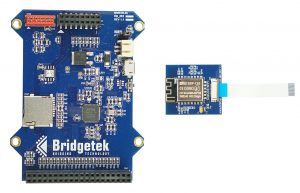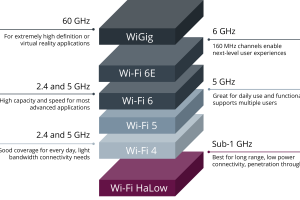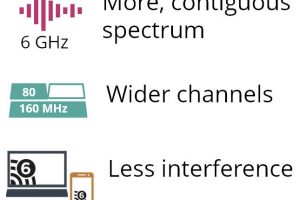
Transmitting and receiving in the 2.4 GHz frequency band, the CleO35-WiFi module is compliant with the commonly used IEEE 802.11b/g/n Wi-Fi standards.
With the objective of enabling the control and monitoring of smart devices within the domestic environment, it can achieve +20dBm output power when in 802.11b mode.
Support for WPA and WPA2 wireless security safeguards against unauthorized access to data streams.
Drawing off a 3.3V supply, this module is supplied with a standard 16 pin 0.5mm pitch FFC cable that allows it to be connected directly to CleO35 board (with 3.5-inch TFT display) or to the CleO-IO shield so that it can be utilized by the larger CleO50 board (with 5-inch TFT display).
Core to the module’s operation is an Ai-Thinker ESP-12S Wi-Fi subsystem. This is based on the compact, highly integrated 32-bit ESP8266 processor – with antenna switch, RF filters, power amplifier, low noise receive amplifier, digital peripheral interface and power management functions all included.
In addition, the company has introduced a new development module for its FT93x series of 32-bit performance-optimized microcontroller units (MCUs).
The compact (66.8mm x 85mm), streamlined and simple to use MM930Lite module complements Bridgetek’s existing suite of development hardware and software tools.
It provides engineers with a platform upon which they can evaluate the performance parameters of the MCU, carry out initial prototyping, or even construct sophisticated systems from the ground up within a short period of time.
Among the applications for which the MM930Lite is most suited are building security/door entry mechanisms, home automation infrastructure, industrial control implementations and embedded multimedia equipment.
As well as its MCU, the module features 8MBytes of embedded Flash memory resource and a Micro SD card port for accommodating external memory. A broad range of interfaces are incorporated too.
These include a Micro-B USB port for connecting to a USB host or delivering power to the module (as an alternative to the +5V DC supply connector), a 2.54mm pitch dual entry female header in a 2 x 8 pin arrangement, a 2 x 5 pin 1.27mm pitch female Micro-MaTch connector for software updating purposes, plus a 16 pin 0.5mm pitch FFC/FPC interconnect for SPI master interfacing (to support attachment to TFT display modules)
 Electronics Weekly Electronics Design & Components Tech News
Electronics Weekly Electronics Design & Components Tech News



